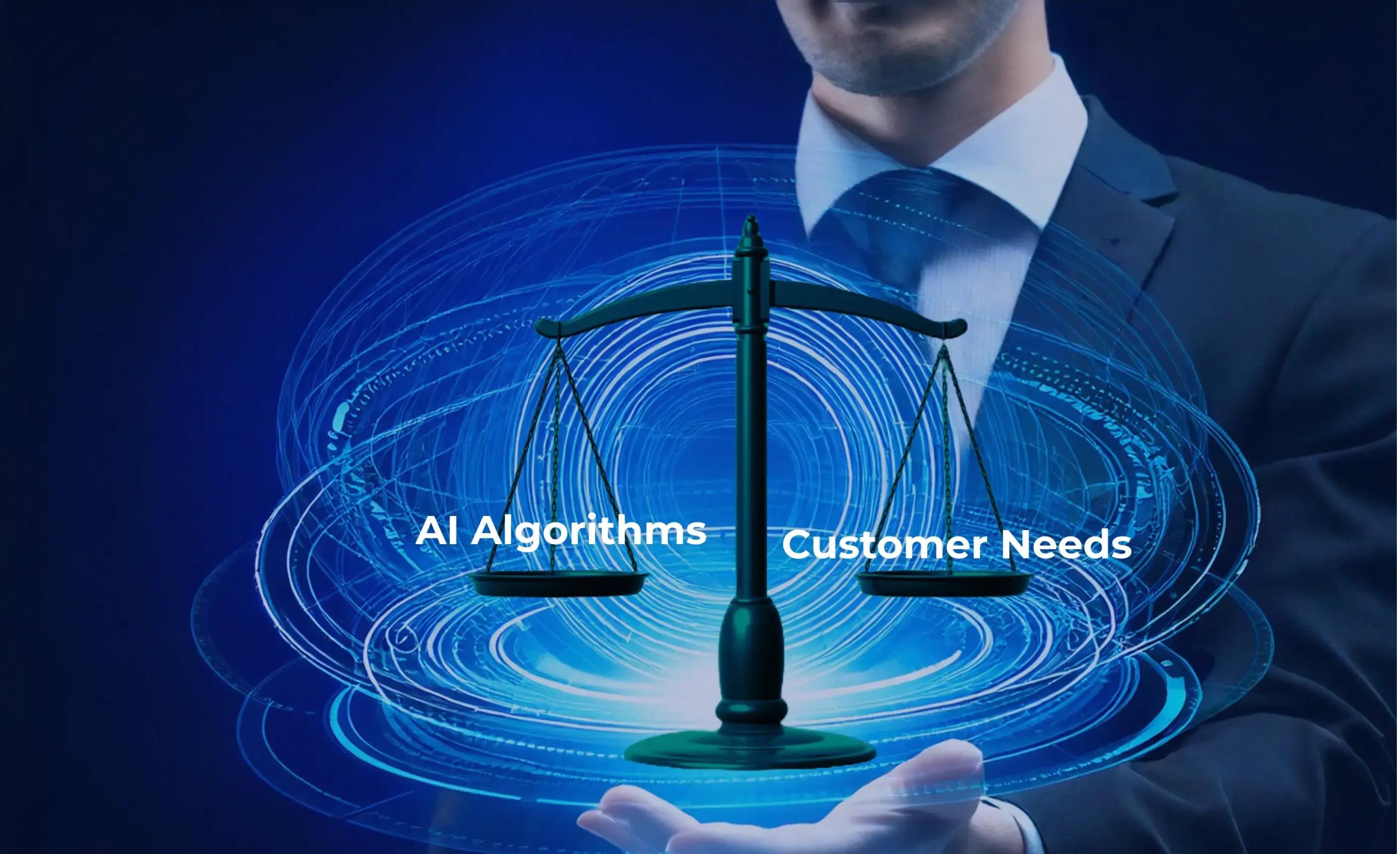70% of Your IT Budget Is Wasted on Legacy
Legacy systems drain your spend, slow your teams, and stall innovation. Modernize with speed, security and confidence — guided by our experts.
What separates the leaders from the laggards in today’s market? It’s the difference between using AI just as a tool and using it as a strategic powerhouse to redefine business operations. Companies that harness its power don’t just stay competitive – they lead. But here's the truth: leveraging AI isn’t just about installing fancy algorithms or automating repetitive tasks. It’s about strategic leadership that can make your business future ready. And that’s where the Chief AI Officer (CAIO) steps in. As a business leader, if you think this role is optional, think again. The CAIO is the captain steering the AI ship, ensuring your organization not only survives but thrives in the ever-evolving digital age.
From Data Analysis to Business Transformation
Let’s be honest, the way businesses have used AI in the recent past was straightforward – data analysis and predictive modeling. But today, AI has moved beyond crunching numbers. We’re automating tasks that were once considered exclusive to human capability. With the rise of generative AI, the landscape has changed dramatically. Businesses must now adapt, and it’s the CAIO that can help businesses do that.
The CAIO isn’t just another C-suite title. It’s a necessity. This role is about integrating AI into the very DNA of your business. It’s about using AI as a business strategy that drives value, efficiency, and innovation. Companies must prioritize a product-first mindset – what’s the business problem? What needs to be automated? And most importantly, how do we build a product that aligns with AI capabilities?
Why Being Product-First Matters
A CAIO focus extends beyond technology. It centers on solving business problems. The reality is that AI initiatives can easily become expensive experiments if they lack direction. So, the modern CAIO asks the right questions : What’s the business issue we’re solving? What value will automation bring? And how can we leverage AI to create exceptional products?
The key to a successful AI strategy is aligning it with customer needs. Understanding the customer deeply is more critical than ever. It’s not enough to just know the algorithms; the CAIO must have a product management mindset, identifying the pain points customers face and building solutions that offer real value. This shift towards a customer-centric AI approach is what differentiates companies that thrive from those that merely survive.

The Multifaceted Role of a CAIO
That said, if you still think a CAIO is just a tech guru, you’re missing the point. A successful CAIO is a master of many trades: technologist, strategist, and communicator. Being a CAIO has a lot to do with bridging the gap between technology and business strategy. Companies need someone who can talk tech and still have a seat at the boardroom table discussing profit and loss.
Here’s the thing – AI isn’t just a single department’s responsibility anymore; it’s integrated into every facet of business, from marketing to operations to customer service. The CAIO’s role is to be the evangelist, ensuring AI permeates every department, creating an AI-first mindset throughout the organization. But it’s not only about integrating tech – it’s about bringing people along for the ride, building an AI-literate workforce that understands the importance of AI beyond the technical details.
Overcoming Regulatory and Ethical Hurdles With the CAIO
The future of AI is exciting, but let’s not kid ourselves, it’s also a minefield. Regulatory bodies are tightening their grip as AI evolves, balancing innovation with public interest. Governments worldwide are scrutinizing AI’s impact, and companies must navigate these choppy waters carefully. This is where the CAIO’s ethical compass becomes imperative.
I believe in the power of AI, but I’m also a realist. Large-scale AI adoption will create new job opportunities, but it will also lead to short-term disruptions. We’ve already seen the initial pushback from labor unions and regulatory bodies, and the dialogue is only getting louder. The CAIO needs to balance these factors, ensuring that AI becomes a positive force in both society and business. Without ethical oversight, AI could spiral out of control, leading to misinformation, data misuse, and even societal backlash.
That’s why the CAIO must enforce frameworks like GGC (Govern, Guide, Control) to ensure AI initiatives remain on the right path. This approach does not only ensure compliance but also ensures the responsible use of AI while maintaining trust, and delivering value to customers and stakeholders.
The Next Wave : AI’s Role in Help Desk Service
So, where do we go from here? The next wave is clear to me : it’s all about transforming help desk services. The potential for AI-human collaboration in this space is immense. Companies are cautious, and rightfully so – no one wants generative AI chatting with customers without proper safeguards. But when we do it right, AI can revolutionize customer experiences, offering 24/7 support that is efficient, personalized, and beyond the typical call center script.
Think about the industries where this could make a real difference – healthcare, supply chains, and of course, customer service. We’re already seeing the beginnings of this shift, with companies integrating AI and human agents to deliver high-quality, around-the-clock service. It’s a symbiotic relationship that’s not just necessary but essential for delivering the kind of experience today’s customers expect.

Setting up Your CAIO for Success
Once you’ve found your CAIO unicorn, you’ve got to set them up for success. Here’s what you can do :
- Integrate AI into Corporate Training – The CAIO should lead AI workshops, educating employees not only on how the tools work but also on how these tools align with business goals. An AI-literate workforce is vital for any organization aiming to stay competitive.
- Focus on Continuous Development – AI is evolving at lightning speed. Your CAIO must stay on top of the latest trends, certifications, and industry insights. Participation in AI conferences and think tanks isn’t optional; it’s essential.
- Establish Clear Communication Channels – AI initiatives can be complex. A monthly “AI Impact” briefing where the CAIO explains progress and upcoming projects helps build transparency and aligns AI efforts with the organization’s goals.
- Prioritize Ethical Oversight – It’s not just a regulatory requirement – it’s a core pillar of any AI strategy. Your CAIO should establish an ethics committee to review AI processes regularly, ensuring they align with the company’s values and standards.
- Create a Supportive Culture – Finally, the CAIO needs a culture that champions AI-driven innovation. Cross-departmental collaboration should be the norm, with teams sharing insights to build AI solutions that are both technically sound and strategically aligned.
Final Thoughts as We See AI Rewriting the Rules
AI is more than just another tool; it’s a game-changer, rewriting the rules of business. With the right CAIO steering the ship, your business can be poised to lead the AI revolution. But finding the right leader is only half the battle. It’s ensuring they have the tools, culture, and support to succeed that gives them the upper hand.
The future is AI-driven, and it’s happening as we speak. The CAIO is your key to navigating this new landscape, ensuring that AI benefits your bottom line as well as the society at large. If you want your organization to thrive, the time to act is now!


